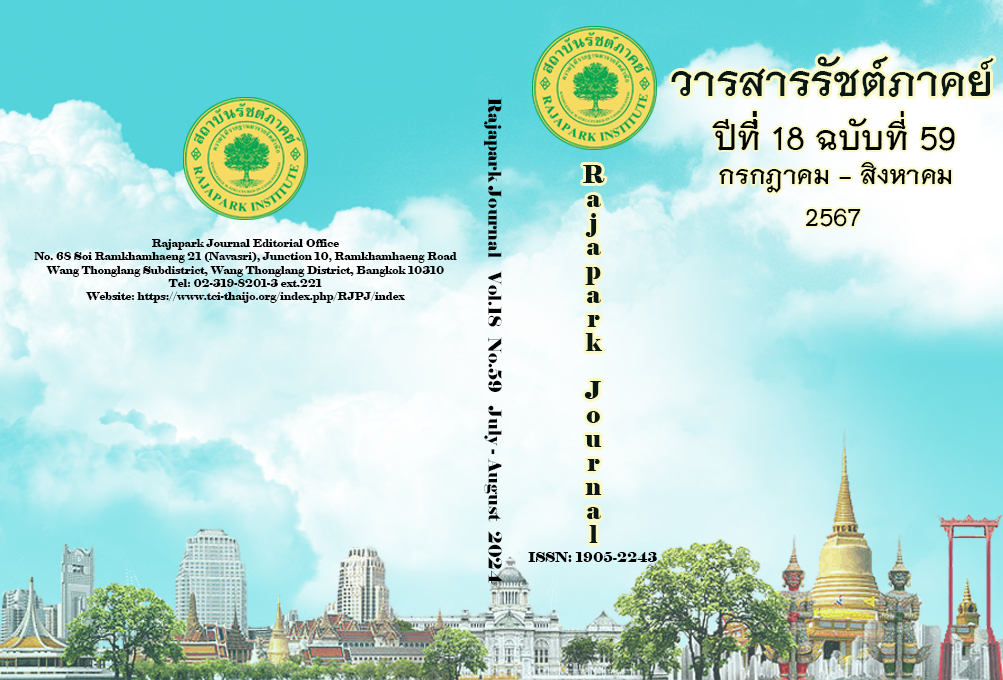Political Communication of Youth Through New Media
Main Article Content
Abstract
The objectives of this research are (1) to study the conditions for the emergence of youth political communication through new media, and (2) to study the form and characteristics of youth political communication through new media. This is qualitative research with a total sample of 18 people, including: (1) a group of 9 youths; (2) a group of 5 academics; and (3) a group of 4 politicians using purposive sampling. Research tools include semi-structured interviews. The researcher has studied information from related documents and research. Then research data was collected from the researcher's observations and by conducting in-depth interviews with a sample group. And the obtained data was analyzed for content (content analysis). The results of the study found that: 1. A study of the conditions for the emergence of youth political communication through new media found that the important conditions that create impetus for youth political communication through new media consist of 5 conditions: 1) class system 2) dissolution of the Future Forward Party 3) Coup 4) global context and Thai context 5) corruption problems. Regarding 2. A study of the form and characteristics of youth political communication through new media found that youth have two types of political communication: 1) Organizing online political communication activities through social networks such as LINE, FaceTime, Instagram, Facebook, TikTok, Telegram, Twitter, etc.; and 2) organizing political communication activities in group formats. It is an activity that brings together citizens to organize political communication activities in various forms. including movement in public spaces and symbolic expressions to express a variety of political positions and attitudes.
Article Details

This work is licensed under a Creative Commons Attribution-NonCommercial-NoDerivatives 4.0 International License.
Views and opinions appearing in the Journal it is the responsibility of the author of the article, and does not constitute the view and responsibility of the editorial team.
References
Blumler, J. G., & Gurevich, M. (2000). Rethinking the study of political communication. In: Curran J, Gurevich M. (eds) Mass Media and Society. Arnold, 194–215.
Chaiyanan, P. (2012). Online media and political communication of Thai youth[Doctoral dissertation, Chulalongkorn University]. http://cuir.car.chula.ac.th/handle/123456789/63783
Jinarat, V. (2021). The Influencing of Facebook Usage for Information on Political Interest and Participation in Politics. Journal of Buddhist Anthropology, 6(12), 412–424. https://so04.tci-thaijo.org/index.php/JSBA/article/view/252179
Punyawutpreeda, P. (2021). Development of Policy-Making Mechanism of Thai Political Parties. Journal of Srilanchang Review, 7(2), 23-37. https://so06.tci-thaijo.org/index.php/jslc/article/view/258402
Thai PBS. (2023, May 11). 2023 election: Generation X has the highest number of voters. https://www.thaipbs.or.th/news/content/327601
Wattana, P., Bubpasiri, T., Chatchaiyan, P., & Wutthiworapong, W. (2020). Information Operation on Social Media in the Age of Political Polarization Period of 2014- 2019. Ramkhamhaeng Journal of Public Administration, 3(3), 68-106. http://ojs.ru.ac.th/index.php/MPA/article/view/186
Wongsuwan, K., Rajbhandaraks, S., & Suphunchitawana, P. (2023). Political Resistance Movement of Secondary School Students in 2020-2021. Rajapark Journal, 17(51), 250-266. https://so05.tci-thaijo.org/index.php/RJPJ/article/view/263330


